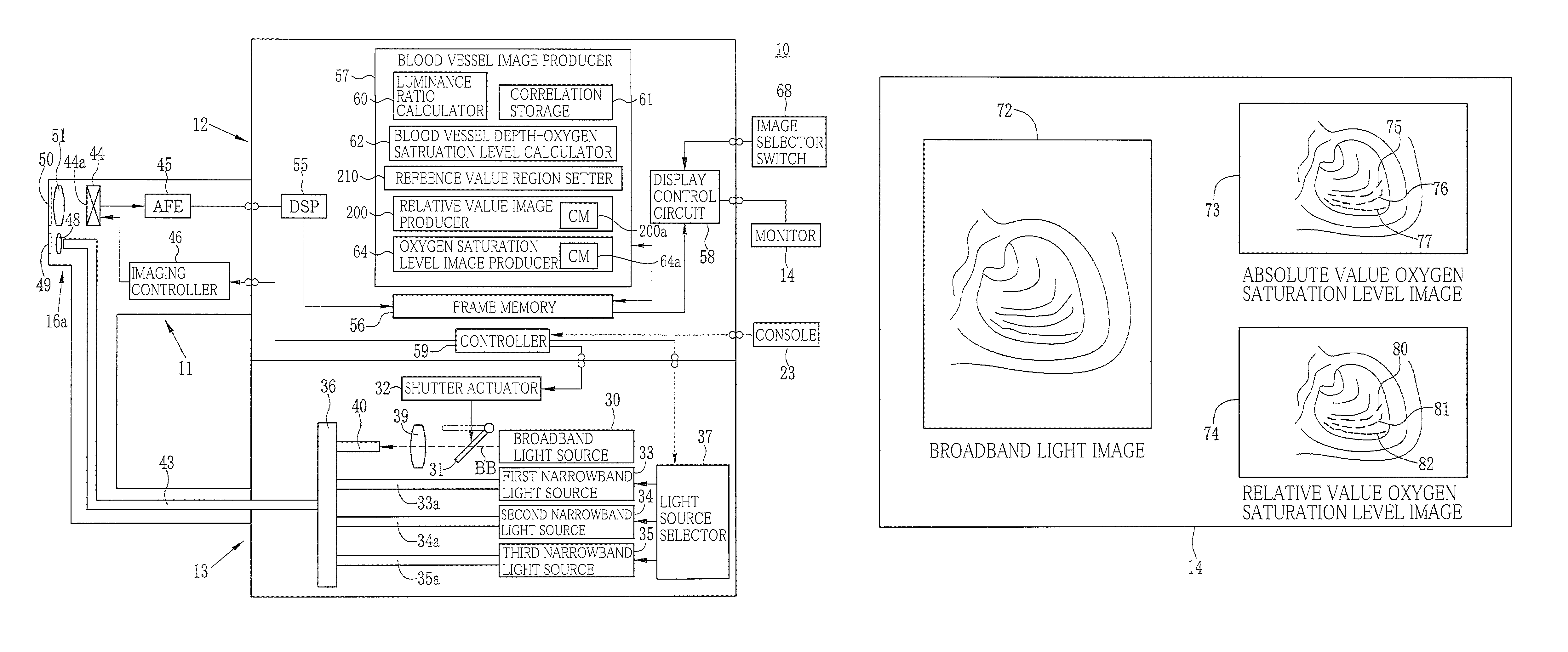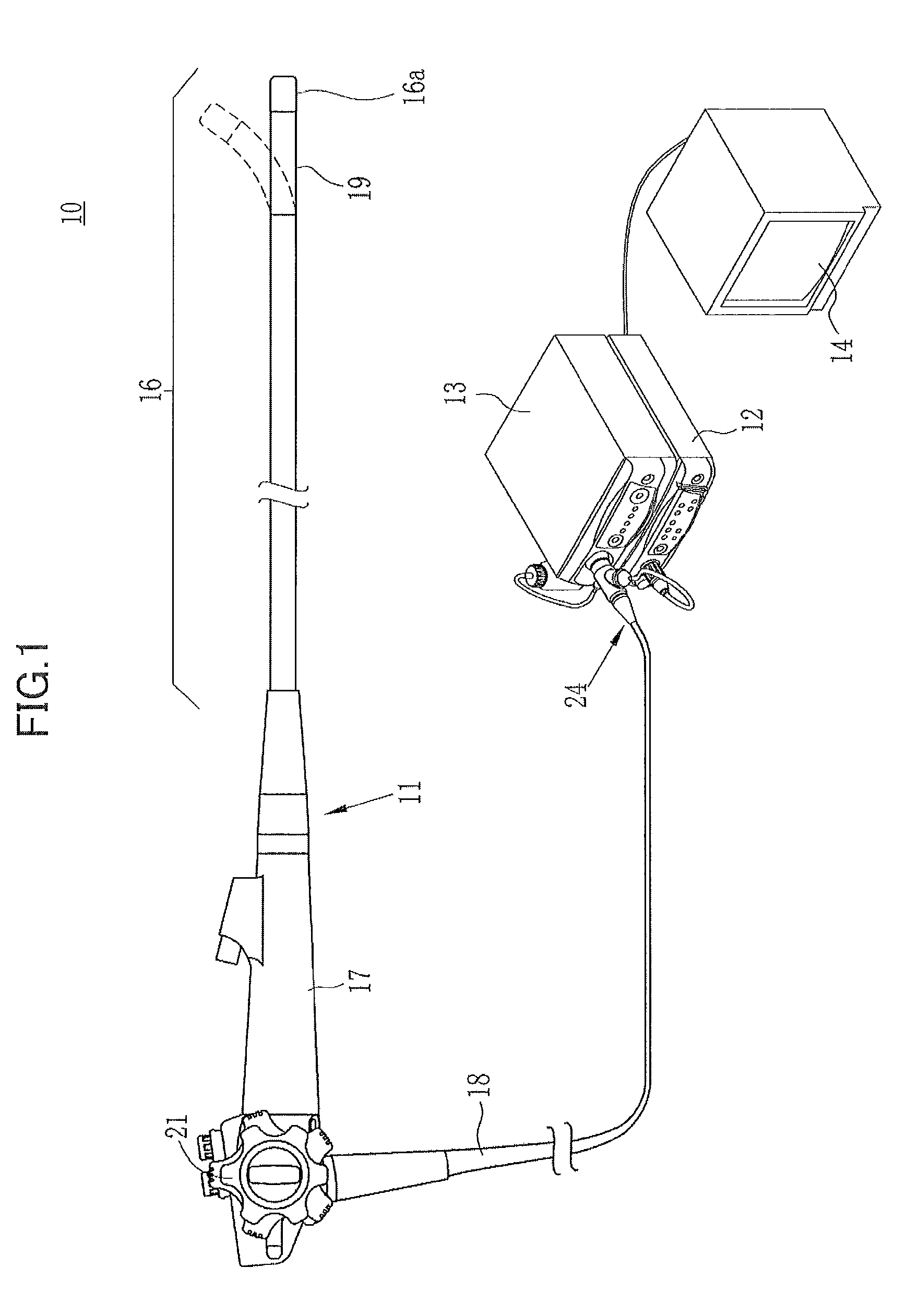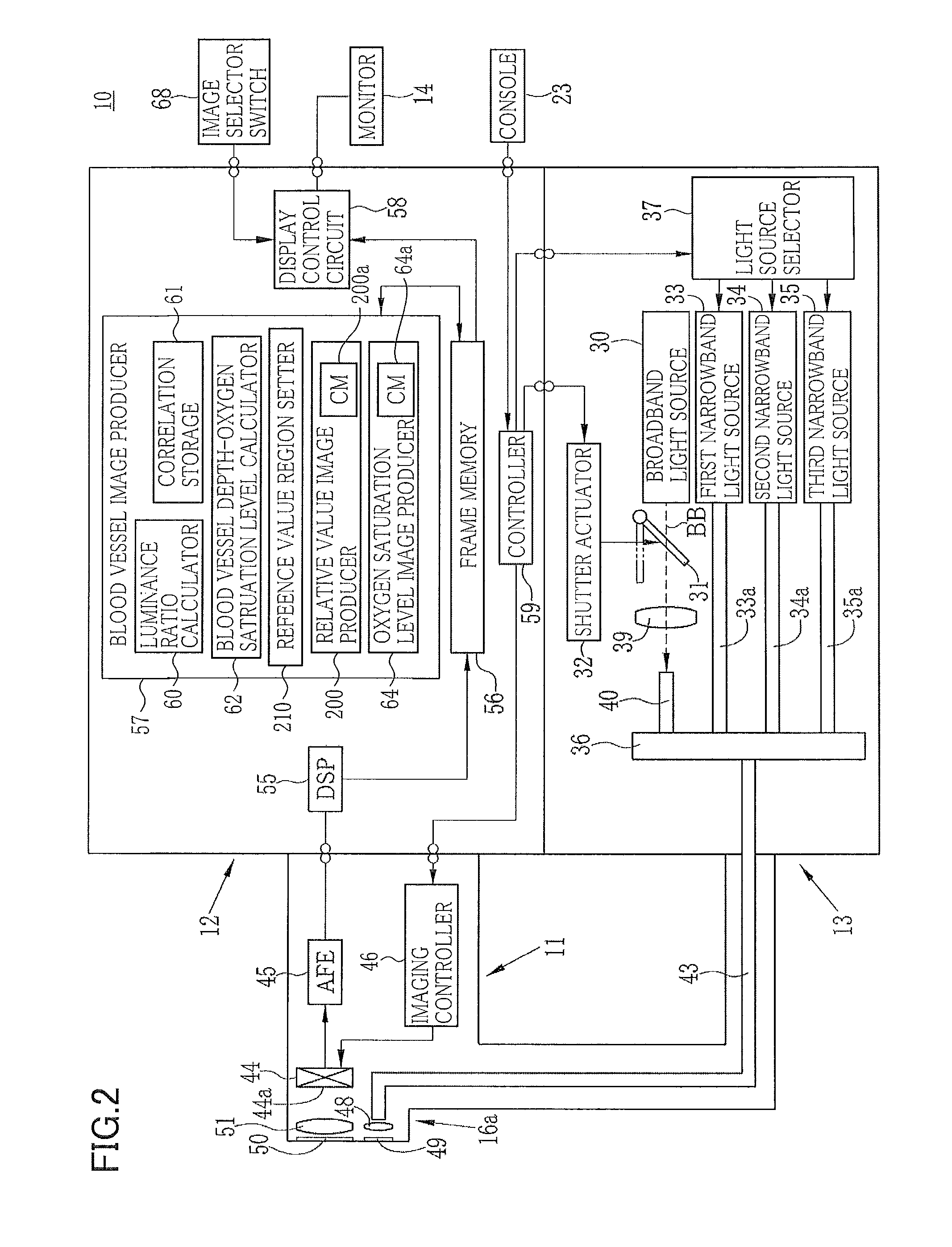Electronic endoscope system, an electronic endoscope processor, and a method of acquiring blood vessel information
a technology of electronic endoscope and electronic endoscope, which is applied in the field of electronic endoscope system and electronic endoscope processor, to achieve the effect of improving the robustness of blood vessel information
- Summary
- Abstract
- Description
- Claims
- Application Information
AI Technical Summary
Benefits of technology
Problems solved by technology
Method used
Image
Examples
first embodiment
[0040]FIG. 1 is an external view of a configuration of the electronic endoscope system according to the invention.
[0041]As illustrated in FIG. 1, an electronic endoscope system 10 according to the first embodiment of the invention comprises an electronic endoscope 11 for imaging the inside of a subject's body cavity, a processor 12 for producing an image of a subject tissue in the body cavity based on a signal acquired by imaging, a light source device 13 for supplying light for illuminating the inside of the body cavity, and a monitor 14 for displaying the image of the inside of the body cavity.
[0042]The electronic endoscope 11 comprises a flexible insertion section 16 that is inserted into a body cavity, an operating section 17 provided at the base of the insertion section 16, and a universal cord 18 for connecting the operating section 17 to the processor 12 and the light source device 13.
[0043]The insertion section 16 has a bending portion 19 at the tip thereof comprising connec...
second embodiment
[0068]In view of the light absorption characteristics of hemoglobin as described above and considering the fact that wavelengths whereby the absorbance varies according to the oxygen saturation level lie in a range of 445 nm and 405 nm and that light having a short wavelength and hence having a short reaching depth is required in order to retrieve blood vessel depth information, at least one of the first to the third narrowband light N1 to N3 preferably has a wavelength range whose central wavelength is 450 nm or less. According to the first and the invention, the first and the third narrowband light are such narrowband light. Further, with the same oxygen saturation level, a difference in wavelength causes a difference in absorption coefficient and also a difference in reaching depth into a mucus membrane. Therefore, using the property of light whose reaching depth varies with the wavelength permits obtaining correlation between luminance ratio and blood vessel depth.
[0069]As illus...
third embodiment
[0112]According to the invention, the luminance ratio calculator 60 calculates a third luminance ratio S3* / S1* in lieu of the step S26.
[0113]The third luminance ratio S3* / S1* is an image signal ratio at a given pixel between two images acquired by illumination of light having wavelengths of 500 nm and 540, respectively. The pixel value ratio S(500) / S(540) tends to be particularly small in the case of a thick blood vessel located in an intermediate or deeper layer. The thick blood vessel here denotes a blood vessel having a diameter of 100 μm or more located in an intermediate or deeper layer (in a depth of 100 μm or more) of a digestive tract mucosa of interest.
[0114]The reference value region setter 210 performs threshold processing of all the pixels in the blood vessel region in respect of the third luminance ratio to identify a region whose third luminance ratio is small. That is, the processing determines whether a pixel of interest belongs to a thick blood vessel (deep-layer bl...
PUM
 Login to View More
Login to View More Abstract
Description
Claims
Application Information
 Login to View More
Login to View More - R&D
- Intellectual Property
- Life Sciences
- Materials
- Tech Scout
- Unparalleled Data Quality
- Higher Quality Content
- 60% Fewer Hallucinations
Browse by: Latest US Patents, China's latest patents, Technical Efficacy Thesaurus, Application Domain, Technology Topic, Popular Technical Reports.
© 2025 PatSnap. All rights reserved.Legal|Privacy policy|Modern Slavery Act Transparency Statement|Sitemap|About US| Contact US: help@patsnap.com



